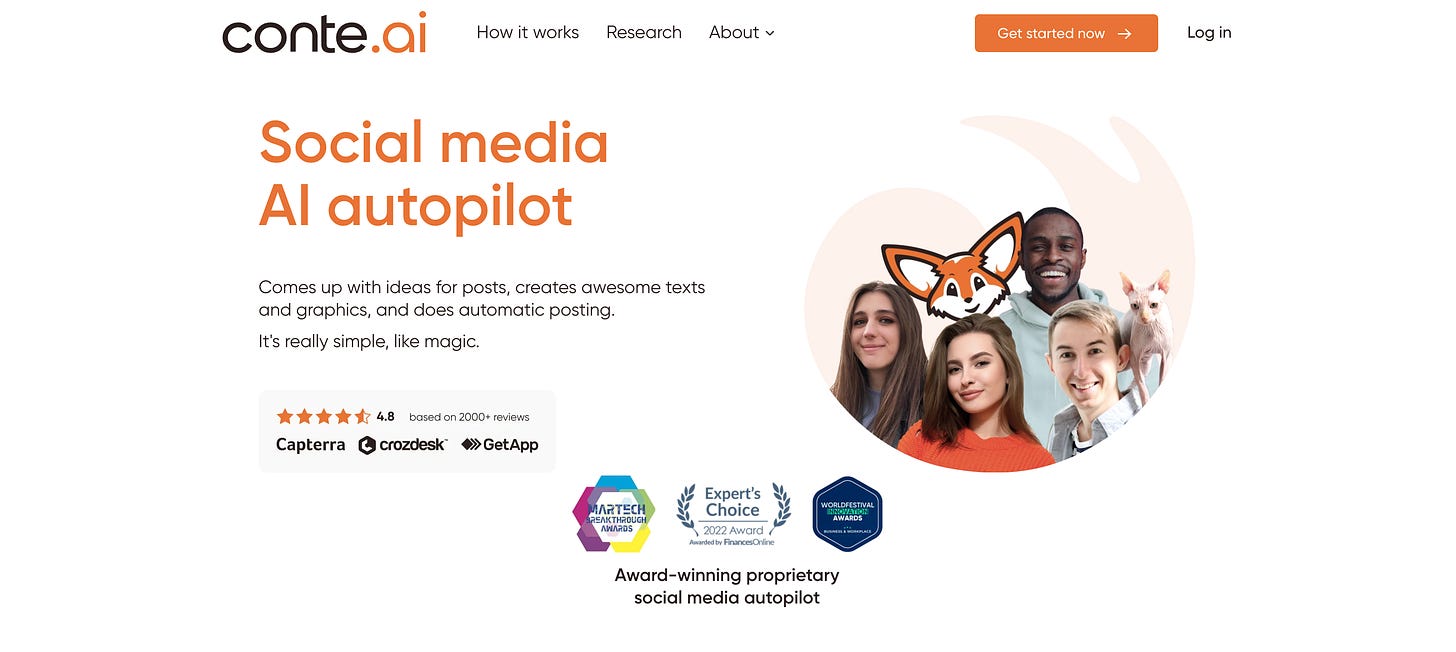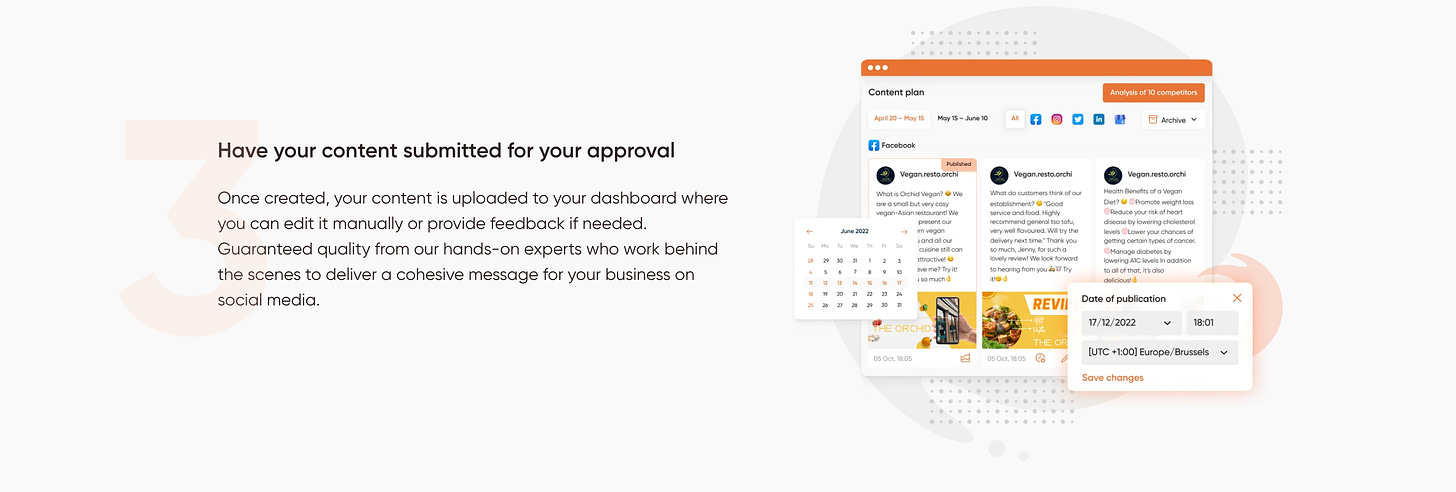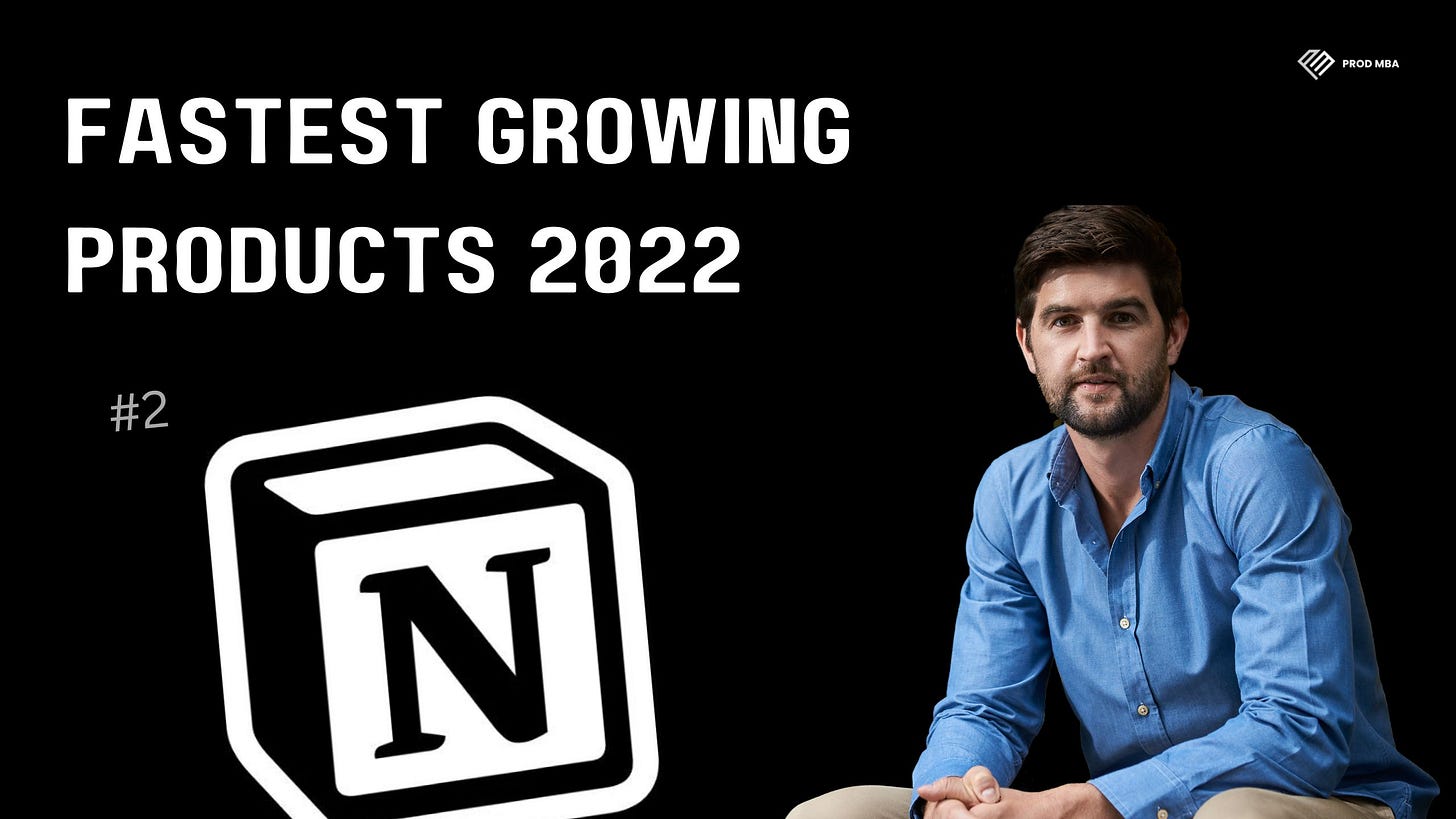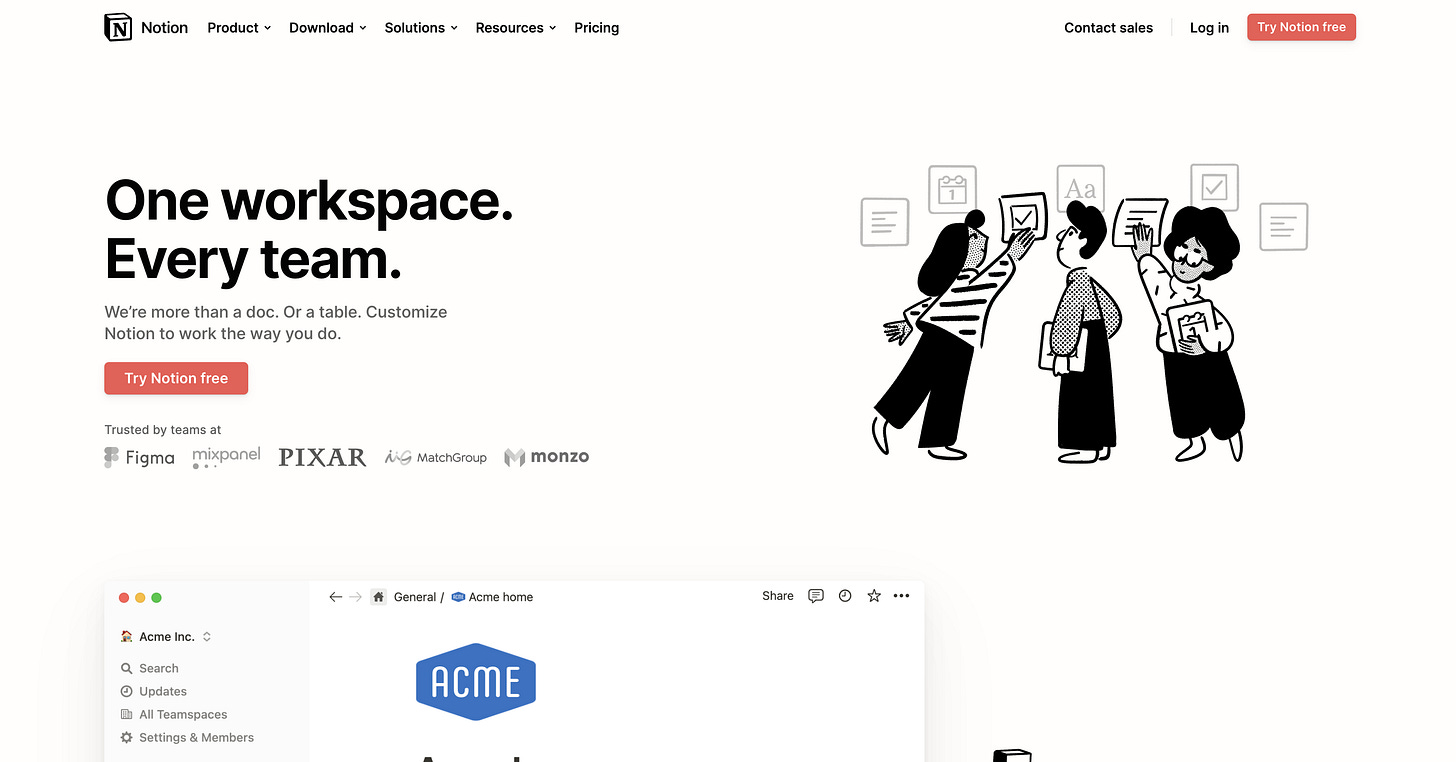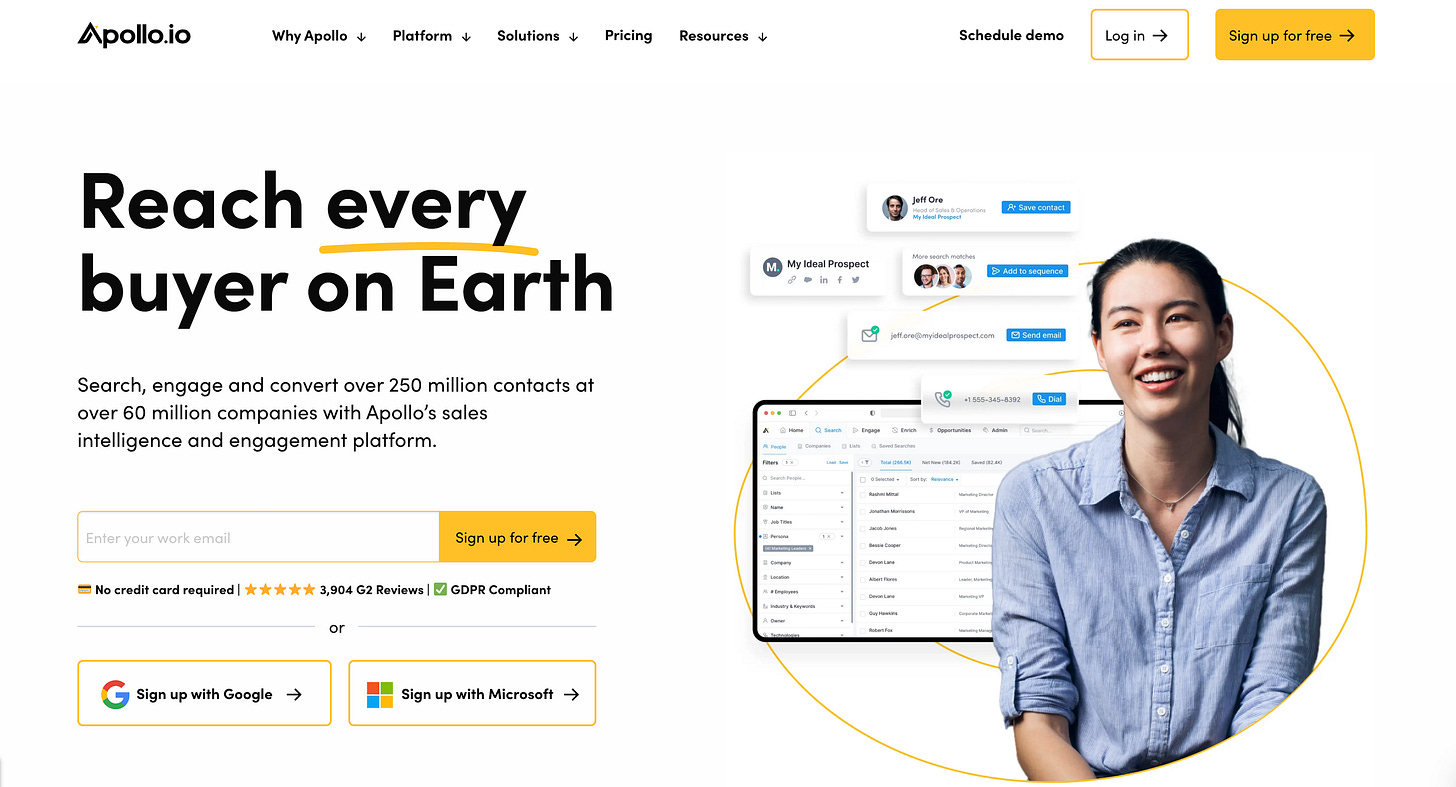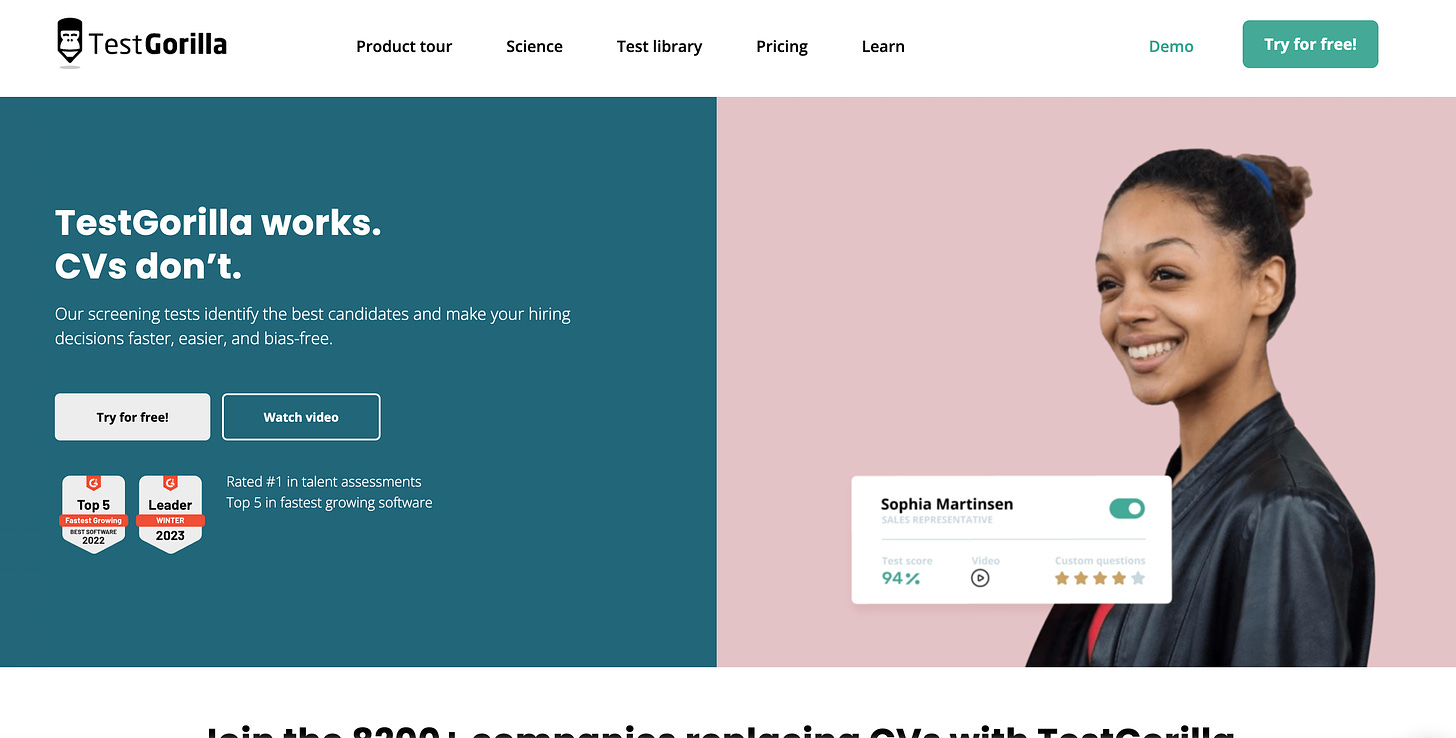The 5 Fastest-Growing Products of 2022 & How They Engineered Success
The 6-Step Blueprint You Can Copy to Build A Winning Product in 2023
In this article, I will analyse the 5 fastest-growing products from 2022, breaking down the specific factors underpinning their rapid growth, such as “speed to core value during onboarding”. The goal is to help you better understand these factors & use them to build wildly successful products.
I will go through each product in order of growth rate, discussing how they score on the following factors:
Unique value proposition
Acuteness of the problem solved
Time saved
Effort reduced
Ease of use
Onboarding experience (measured by the time it takes for a new user to get to the core value of the product)
Note: I’ve also recorded a short video series on this topic. Watch it here
Why These 6 Factors?
The short answer:
There are many things that help a team build a great product. Great engineering, for example, or the relationship between founders. However, there are few things that determine success or failure.
The factors chosen determine success or failure.
Why?
You could have a bad engineering team, for example, but still build a high-growth product that saves your customers lots of time or effort. You cannot build a high-growth product with a great engineering team that build a product that takes up more customer time or creates more required effort for that customer.
These factors are, therefore, pre-requisites to high-growth. You could build a great product without delivering on all of these factors, but you cannot achieve the kind of growth we would equate with achieving Product-Market Fit.
Let’s look at why each specific factor is so important:
Unique value proposition: As I have argued in this article, lack of differentiation is the most common cause of product failure. You must, therefore, have a truly unique value proposition in order to help you attract, convert & get your user to pay you money for your product. Without differentiation, you’ll always be stuck in a price and/or cost-saving war.
Acuteness of the problem solved: Not all great products solve a very acute problem. When I google which teams played in the 2002 World Cup final, I’m not using Google Search for some life-saving reason. However, solving an acute problem makes it a lot easier to drive growth. Why? If the problem is acute, the target user is super motivated to solve the problem! They will therefore be willing to put in more effort, time & resources to solve it. They will therefore be more willing to try out, stick with & ultimately pay for your product as a result
Time saved: Who doesn’t like to save time?
Effort reduced: Who doesn’t like life to be easier?
Ease of use: Who doesn’t like the product experience to be easier?
Onboarding experience: There are so many products out there, that the first experience a user has with your product is essential. Do they not just understand what your product does, but can they get real value from it extremely quickly? All high-growth products focus on delivering what we call the “core value” (i.e. the primary value the Unique Value Proposition promises them) as quickly as possible.
Let’s now look at the 5 highest-growth products of 2022 & assess how they score on each of these 6 factors:
#1 Conte.Ai
Unique value proposition
Conte.ai promises “Social media AI autopilot” for its target customers. The key unique value here is “autopilot” here, implying automation, and thus reduced time, reduced stress, cost from using this product.
Their landing page then is explicit in how this promise is delivered: It doesn’t just auto-scheduling posts (as many products already do), but it also “comes up with ideas for posts & creates awesome texts and graphics”.
This is genuinely unique & extremely valuable if they are able to deliver on that promise, which the 4.8/5 star review after 2000+ reviews would imply they are able to do.
Score: 10/10 for a very unique, very valuable proposition.
Acuteness of the problem solved
The product solves a very acute problem for its target market (primarily small business owners): raising awareness of their product through engaging content.
Contei.ai not just solves the problem of scheduling posts, but solves the more acute problem for this group of funding content creation & content design, or even trying to create content themselves.
Score: 10/10
Time saved
Whether creating content yourself as a small business owner, or committing time to hiring a content creation team, managing them, reviewing content, etc., this product likely saves 10+ hours per week for its target audience. That is a lot of time to gain back for a time-poor small business owner.
Score: 10/10
Effort reduced
Effort shouldn’t just be quantified in terms of hours committed. The mental burden of content creation, of managing a content team, of worrying about whether the content will in fact be engaging? All of it adds up to a significant burden.
This is even more true where content is the primary acquisition channel for these small businesses, on which the business’ success or failure depends.
Conte.ai goes a long way to reducing effort, but there is still some need to customise content, to provide input for the tool to create great content & the worry of whether the content will be truly engaging remains.
Score: 8/10
Ease of use
Connect your social media accounts, review content, then watch as the tool automates your schedule. Easy as that.
There is, however, a lack of education around what makes good content & what, precisely, the user should be reviewing (both for preparing posts & reviewing the content reports).
Generally, very intuitive, despite a relatively complex problem to solve.
Score: 9/10
Onboarding experience
Users are able to connect their social media accounts very quickly, but require 10mins to fill in a form providing context about what kind of content they require. Add to this the need for a team of experts to create content for you to review & the onboarding process is slow.
Therefore, despite a very strong user experience, there’s a delay to get to the core value which can’t be avoided with this solution. Despite this, for users who do stick around, the reviews suggest they get a huge amount of value from Conte.ai
Time to core value: 24hrs
#2 Notion
Unique value proposition
Notion’s value proposition isn’t particularly unique: “One workspace. Every team.” Sounds catchy, but I can think of a bucketload of products that offer the same thing (Trello, Confluence, etc.).
Sure, the ability to “customize Notion to work the way you do” is interesting, but, again, I would consider Trello to deliver on that as well.
Score: 4/10
Acuteness of the problem solved
What Notion lacks in terms of UVP, it sure makes up for elsewhere. Notion solves a number of acute problems stacked together.
Firstly, the need to organise our work effectively as a team is an acute problem, as productivity - and ultimately business results - depend on it.
Secondly, it addresses the need to collaborate effectively on flexible document types, such as kanban boards, tables, etc.
Thirdly, it helps users organise their own individual time, leading to greater productivity (& a greater sense of control).
As being productive is so important for us individually - and as a business - Notion scores highly on the acuteness of the problems solved.
Score: 9/10
Time saved
Notion’s modular approach to creating pages & the content that each page contains is where it really delivers unique value. Users understand the design language - and elements - Notion provides, making it quick to create relevant documents.
Add to that a vast range of templates to choose from & the product helps users get work done much faster.
Score: 7/10
Effort reduced
All your historic & live documents stored in one place, all following the same design language, all very easy to contribute to (& see what others have contributed) makes Notion a joy to use.
It takes the mental effort out of finding & editing relevant documents, which is why so many teams have switched to using it.
Score: 9/10
Ease of use
Simple, reusable components & a consistent user experience, whatever file type you are on make for an easy user experience.
Onboarding experience
Users are able to access other people’s Notion documents before they even need to sign up. This - being able to actually experience the value, rather than just reading about it - is far more compelling for potential users.
Furthermore, when a user does sign up to create their own document, they are able to choose from not just a vast library of templates, but templates which are relevant (for example, as I write this in Jan 2023, the first suggested template I see is one for "a “2023 Yearly Goal Tracker”).
The use of templates helps the user get to the core value within seconds of signup.
Time to core value: 10 seconds
#3 Apollo
Unique value proposition
Apollo promises to “Reach every buyer on Earth” for anybody working in sales & marketing.
How? In a genuinely unique way: A database to “search, engage and convert over 250 million contacts at over 60 million companies”.
Sure, other companies help you scrape somebody’s contact details in a convoluted manner, but Apollo serves it up on a plate for you.
Score: 9/10
Acuteness of the problem solved
This is a very acute problem. Qualifying leads (i.e. finding people that might be interested in your product) takes up a lot of manual time, putting spreadsheets together & manually researching those people.
Sellers want to focus on selling, not on spreadsheets. Plus, their job depends on results. Results come from being a lot more productive.
Score: 9/10
Time saved
Apollo saves them hours per day manually putting together lists of leads.
Score: 10/10
Effort reduced
The mental burden of manually putting lists of leads together is a big one. It’s boring, it’s repetitive, and you know that most of those leads won’t even respond to you in sales! The less of this you need to do, the more productive you will be - but, also, the better your job satisfaction will be!
Score: 10/10
Ease of use
Super easy. Filter based on the kind of people you want to reach, then setup automations to engage with those leads.
Score: 10/10
Onboarding experience
The onboarding is very powerful in getting you from understanding the value proposition to seeing a list of relevant leads. You just need to add some basic filters, then you are off to the races.
Time to core value: 30 seconds
#4 Hopin
Unique value proposition
Hopin’s promise isn’t that unique, simply helping you “Create Community Experiences”. Where Hopin is unique is in the delivery: It allows you to organise different types of community events in one place, removing the friction of switching between different tools.
Score: 7/10
Acuteness of the problem solved
Being able to create & manage community experiences in one place isn’t the most acute problem, as event organisers currently simply use different tools for each event type (e.g. StreamYard for a live stream).
There are therefore good existing alternatives to achieve the same outcomes (organising events).
Score: 5/10
Time saved
Despite not solving a super acute problem, Hopin’s success lies in removing friction from managing community events. If you manage events on a daily basis, this translates to a lot of time saved switching between tools & trying to sync those tools (e.g. setting up a webinar on Session, but also live streaming it on StreamYard at the same time).
Score: 7/10
Effort reduced
As well as time saved, Hopin just makes the event organisation experience far smoother.
Score: 7/10
Ease of use
Reduced effort in terms of tasks to be done meet a very slick user interface, with all experiences in one place, with a focus on creating & managing the events themselves.
Score: 8/10
Onboarding experience
Hopin helps you get started immediately with the specific job you want to get done. Want to create a webinar? Click “Run a webinar”. Want to start a live stream? Click “Create a live stream”.
These specific calls-to-action remove any friction in getting started, then keep the steps required to set up that community event as minimal as possible.
Over time, Hopin then nudges you to create other types of community event, then aggregate them in one place (on Hopin) to see the core value of the suite of products.
A slick onboarding experience. However, as you have to ultimately wait for the event to take place , which is the true core value, (usually weeks away), the delay to get to the core value is a long one.
Time to core value: 2 weeks
#5 TestGorilla
Unique value proposition
I love TestGorilla’s UVP: “TestGorilla works. CVs don’t.”
It stands strongly against the existing way of doing things (reviewing candidates by CV), thus immediately sending a clear message that “this product is different”.
Why do they do this? How they deliver the value of effective candidate screening is not that unique: Providing screening tests.
Sure, it might be “faster, easier, and bias-free”, but we have to try the product to know that for sure.
Score: 6/10
Acuteness of the problem solved
Hiring is a VERY acute problem to solve, particularly when companies have high turnover or are hiring a lot of people at the same time (e.g. after an investment raise).
This is why, despite a super intriguing, unique value proposition, I suspect many users are willing to give the product a try.
Score: 10/10
Time saved
Hiring teams still need to review candidates, but the screening process takes away the need to spend so much time reviewing candidates test results (either async or on a call with the candidate). That translates to a good 2-3hrs per candidate in terms of time saved.
Score: 10/10
Effort reduced
It’s not just the time saved, but the effort that these screening tests save. The need to come up with the right test for each role, to review the results (hard to do objectively!) & the uncertainty around whether you are in fact conducting a good interview process… All of these things add up to more stress & more overhead.
Score: 10/10
Ease of use
We love it. Simply name an assessment, select the right test from their library, then customise anything that needs customising. You’re then ready to onboard candidates.
We would give it a 10/10, but the product still leaves us wondering: How would the hiring team know if they’ve picked the right test? And is it right for the specific role they are hiring for?
Score: 8/10
Onboarding experience
It is extremely quick & easy to set up your first screening test. Name our assessment, add the role, select a relevant test, customise (if needed), send to candidate.
You can go from signup to seeing your first results coming in within an hour (assuming you send the test out to candidates being actively interviewed). Even just seeing the assessment setup & ready to go takes the weight off your shoulders as a hiring manager.
Time to core value: 1-2hrs (5mins if we consider the core value to be setting up your first assessment)
Conclusion:
Here's the thing... these things are ALWAYS valuable. New trends come (e.g. problems to solve, new tech), but the core principles underpinning great products are perennial: save time, effort, deliver on an acute problem





